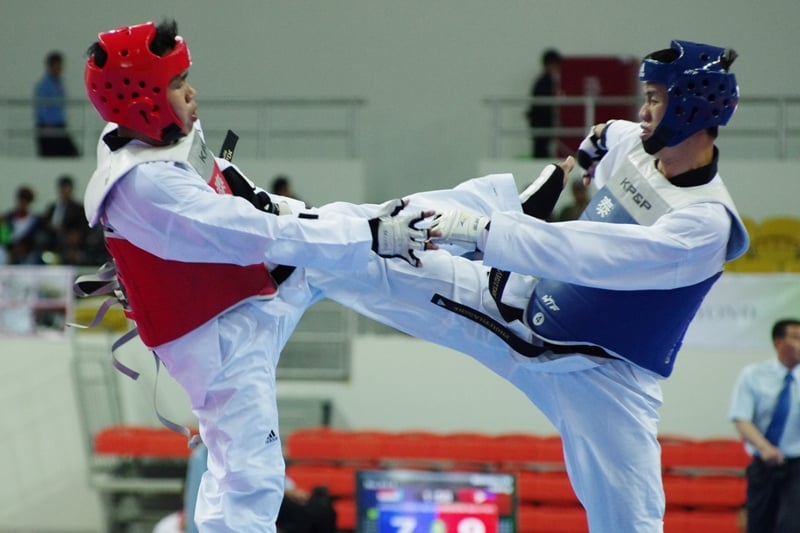Different styles of Taekwondo

Image credit: Aundry Gan/SportSG
The World Taekwondo Federation (WTF) style is the most common style of taekwondo, used in most sporting events such as the Olympics. However, other styles are also practised.
International Taekwondo Federation
Compared to WTF, the International Taekwondo Federation (ITF) style is more traditional. Protective gear is sometimes optional, but padding is required during sparring matches. The protective gear used also differs: ITF frequently employs a head guard, shin guards, gloves, and groin guard, while WTF utilizes the hogu, forearm guards, groin guard and head guard. Padding in WTF taekwondo is also thicker, as it is a full-contact sport, while ITF is only semi-contact with full-powered strikes disallowed.
Additionally, punches to the face and head are allowed under the IT while they are forbidden in WTF taekwondo, due to WTF’s perception that kicks are stronger and better. Hence, WTF favours kicks whereas ITF encourages participants to hone both their kicks and hand strikes.
American Taekwondo Association
Also known as ATA, this style of taekwondo is one of the most popular styles in the United States. It is considered easier than both ITF and WTF, mainly due to the fact that it only takes up to two years to gain a black belt in ATA, while it takes around four and seven years for the other two respectively.
One main difference that ATA has compared to the other two forms is that it teaches students how to use weapons, along with taekwondo techniques such as kicks and blows. Weapons include sticks, nunchucks, bo staff, canes, with different fighting divisions for each weapon.
ATA requires participants to wear a head guard, mouth guard, groin guard, foot gear, hand gear, as well as a face mask during competitions, unlike the previous two styles. This is due to the fact that ATA is less strict in terms of regulation, and hence participants need to be properly protected. Nevertheless, participants are not allowed to strike at their opponent’s back or below the belt, and hand blows to the head are also forbidden. Additionally, elbow strikes are disallowed, unlike the previous two styles.
To receive the latest updates on the happenings in the Singapore sports scene, or to find out more about some of the latest programmes on offer at ActiveSG, like our Facebook page here.





![ActiveSG Academies and Clubs Logo (Solid Colour)[8647]](https://www.activesgcircle.gov.sg/hs-fs/hubfs/ActiveSG%20Circle%202023Theme/images/ActiveSG%20Academies%20and%20Clubs%20Logo%20(Solid%20Colour)%5B8647%5D.png?width=150&height=65&name=ActiveSG%20Academies%20and%20Clubs%20Logo%20(Solid%20Colour)%5B8647%5D.png)



-01.png?width=200&height=141&name=Team%20Singapore%20Logo%20(Red)-01.png)



